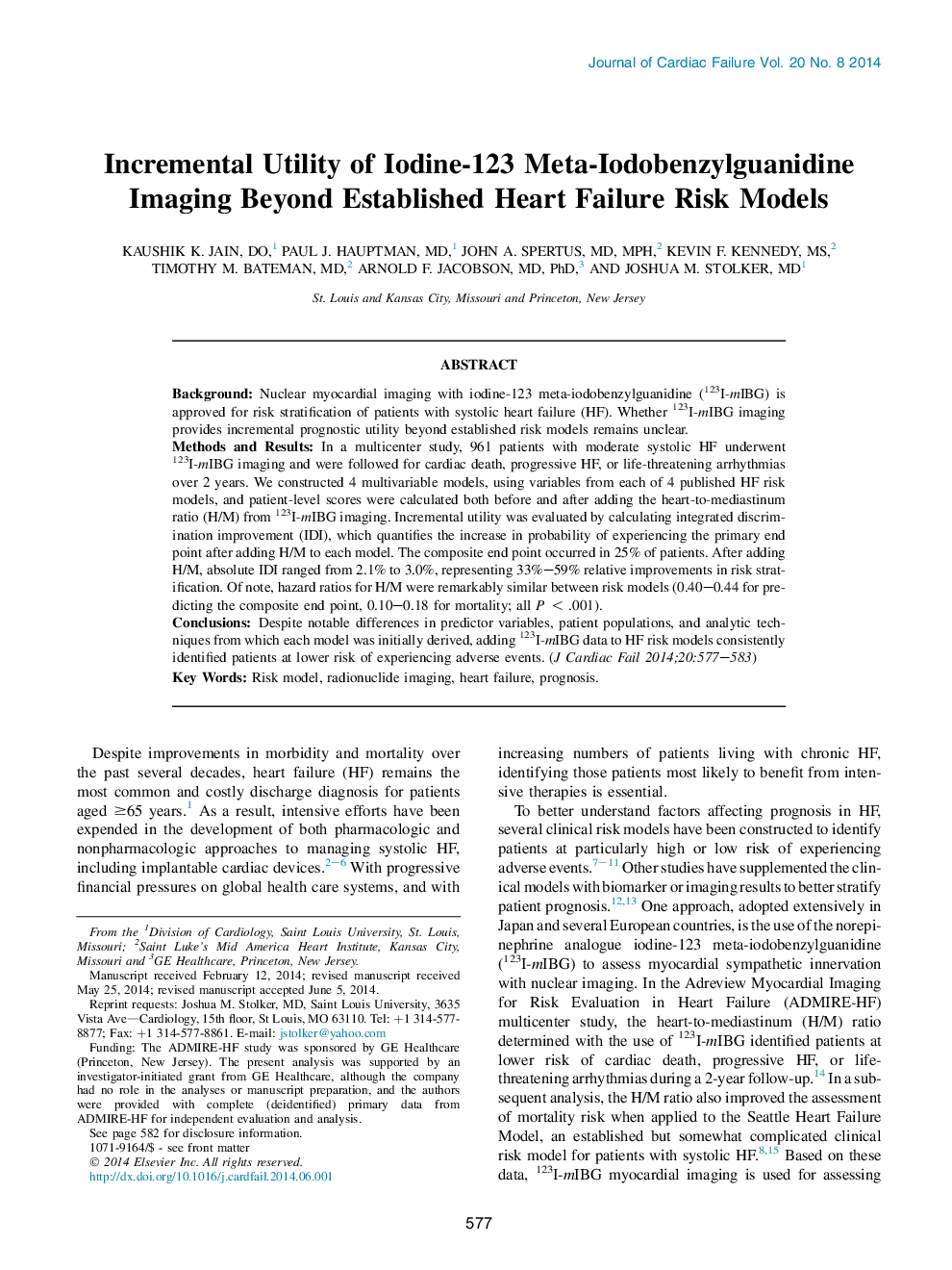| Article ID | Journal | Published Year | Pages | File Type |
|---|---|---|---|---|
| 2959009 | Journal of Cardiac Failure | 2014 | 7 Pages |
•Nuclear myocardial imaging has prognostic value in moderate heart failure (HF).•Risk stratification improves when imaging data are added to existing risk models.•Nuclear imaging is particularly useful for identifying lower risk HF patients.•Findings are similar for a composite clinical end point, or for mortality alone.•This may help identify HF patients in whom aggressive treatments are not warranted.
BackgroundNuclear myocardial imaging with iodine-123 meta-iodobenzylguanidine (123I-mIBG) is approved for risk stratification of patients with systolic heart failure (HF). Whether 123I-mIBG imaging provides incremental prognostic utility beyond established risk models remains unclear.Methods and ResultsIn a multicenter study, 961 patients with moderate systolic HF underwent 123I-mIBG imaging and were followed for cardiac death, progressive HF, or life-threatening arrhythmias over 2 years. We constructed 4 multivariable models, using variables from each of 4 published HF risk models, and patient-level scores were calculated both before and after adding the heart-to-mediastinum ratio (H/M) from 123I-mIBG imaging. Incremental utility was evaluated by calculating integrated discrimination improvement (IDI), which quantifies the increase in probability of experiencing the primary end point after adding H/M to each model. The composite end point occurred in 25% of patients. After adding H/M, absolute IDI ranged from 2.1% to 3.0%, representing 33%–59% relative improvements in risk stratification. Of note, hazard ratios for H/M were remarkably similar between risk models (0.40–0.44 for predicting the composite end point, 0.10–0.18 for mortality; all P < .001).ConclusionsDespite notable differences in predictor variables, patient populations, and analytic techniques from which each model was initially derived, adding 123I-mIBG data to HF risk models consistently identified patients at lower risk of experiencing adverse events.
